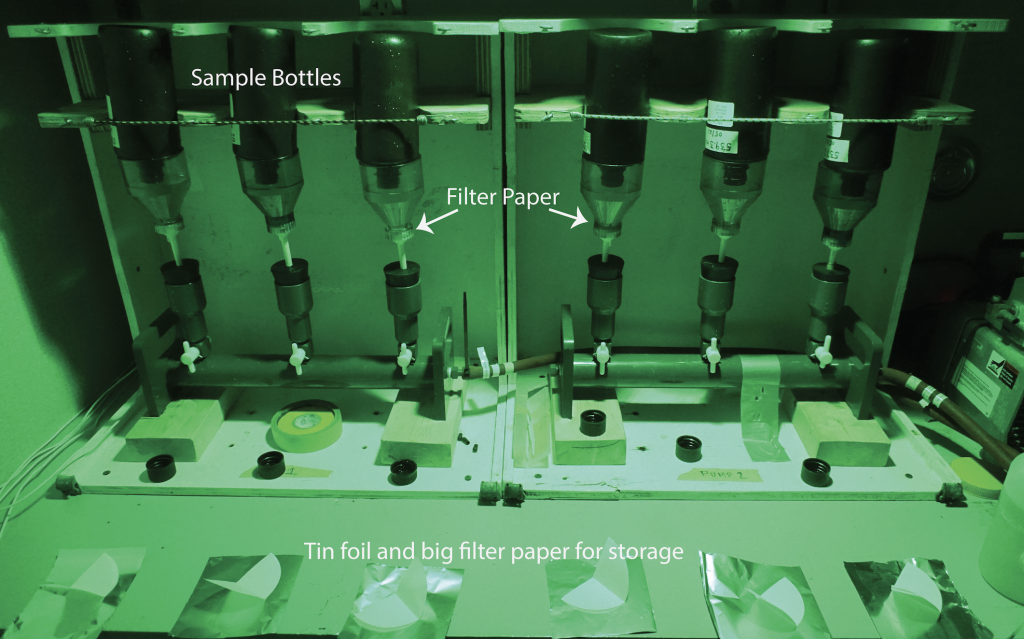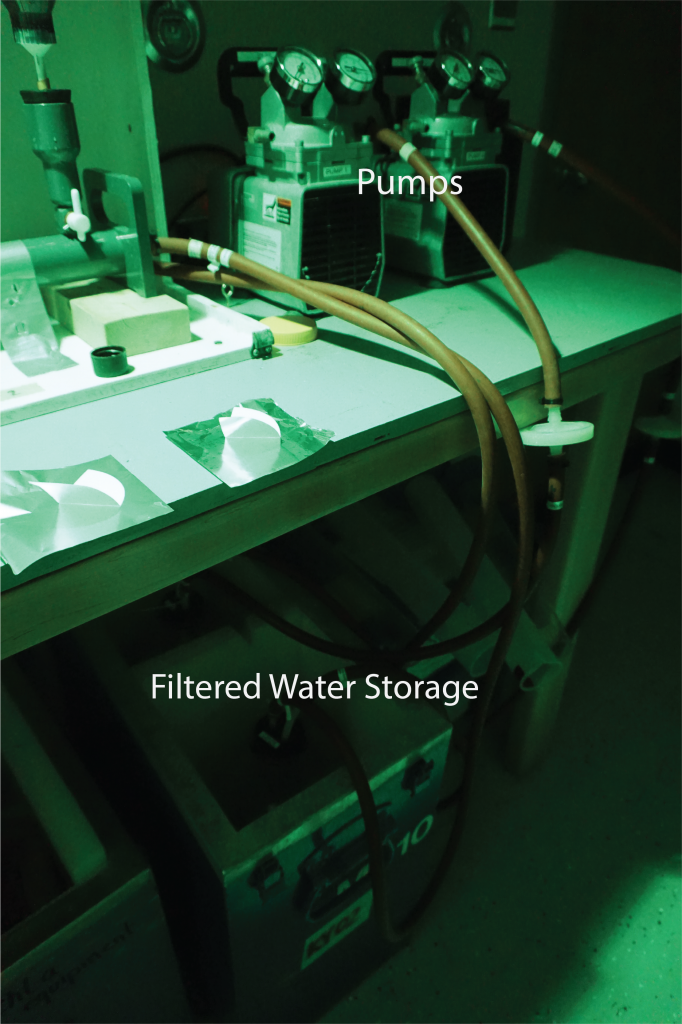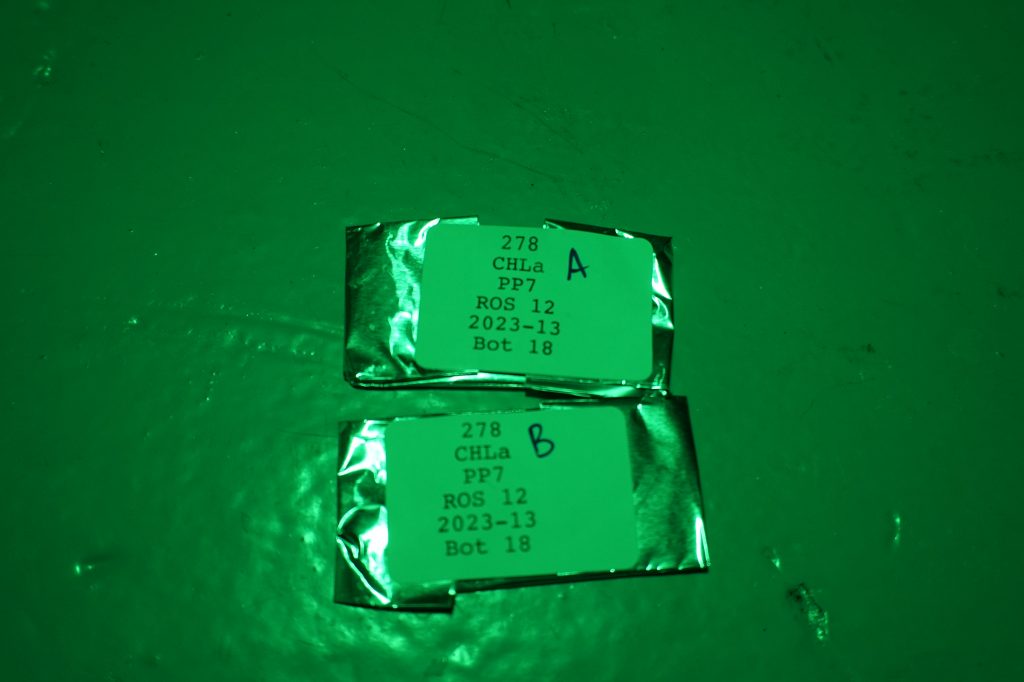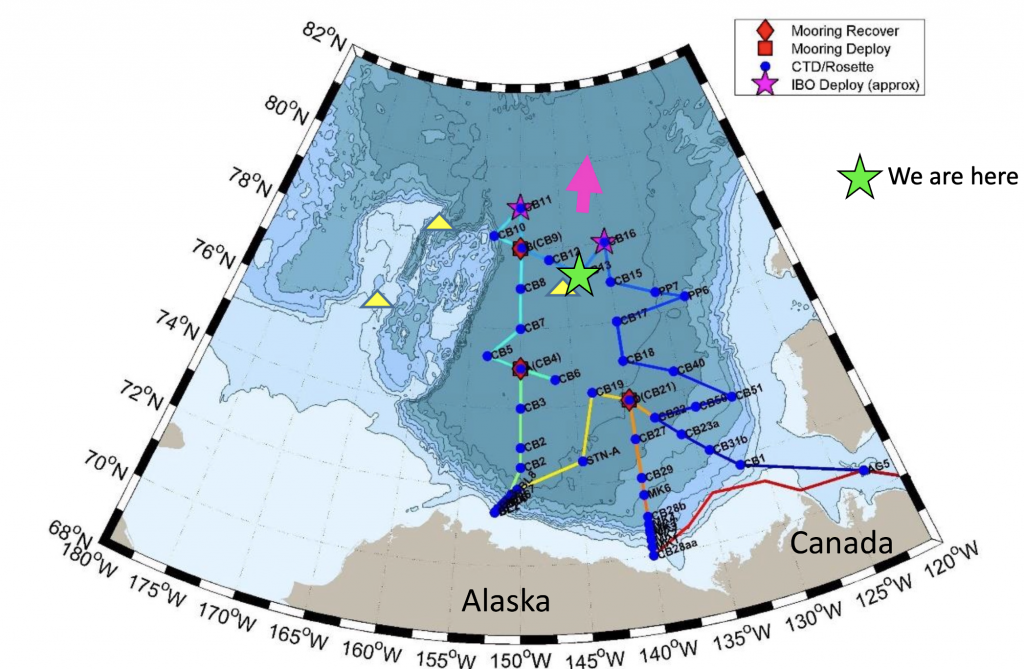Dispatch 12: Filtering Chlorophyll in the “Green Room”!
Annika Margevich
September 26, 2023
Dispatch 12: Filtering Chlorophyll in the “Green Room”!
After we collect water samples from each CTD cast, some of the samples get processed on board. In a small lab tucked back in a corner, we have a station set up to filter chlorophyll-a out of samples. Chlorophyll-a is a pigment that allows algae to photosynthesize, where sunlight is used to generate oxygen and energy. Because it requires light, we only take water samples from the Niskin bottles tripped relatively close to the surface of the ocean where light can penetrate. Chlorophyll-a concentrations are valuable in giving us an idea of the level of primary production (photosynthesis) that is happening in the Arctic Ocean, something that is difficult to quantify. Once we collect the samples, we go straight to the lab to run the water samples through a filter. Because the amount of chlorophyll is sensitive to light, we collect the water samples in brown bottles so no light can enter. We also do the filtering in a room with only green light, hence the “green room” and the green tint on all the photos.
When we get to the lab, we first record the sample information in a logbook. Some information that goes into the log includes what station we are at, the sample number, and the volume of water for each sample. Keeping orderly records is a super important, though tedious, part of lab work. Several different people can be responsible for collecting one set of samples, so we must be organized to make sure that each person records all the same pertinent information so that the analysis can go smoothly. Once the information is recorded, we can start to filter the water samples. For our set up, there are two pumps which are connected to three stands each. We place a filter paper on top of each stand and then screw on the funnels. Next, we place the bottles upside down so that the water fills the funnel. We turn on the pumps and open the valves using the white levers on each stand. The pumps suck the water through the filter paper on each stand, and the chlorophyll gets trapped in the filter paper. Once all the water has been filtered, we wrap the small filter paper from the funnel in a bigger filter paper to make sure nothing falls off and is lost, and then we wrap the sample in tin foil and label it. We store all the filters in a -80C (-112F) freezer until it eventually gets sent to the Institute of Ocean Sciences (IOS) where they analyze all the chlorophyll-a captured by the filter!



